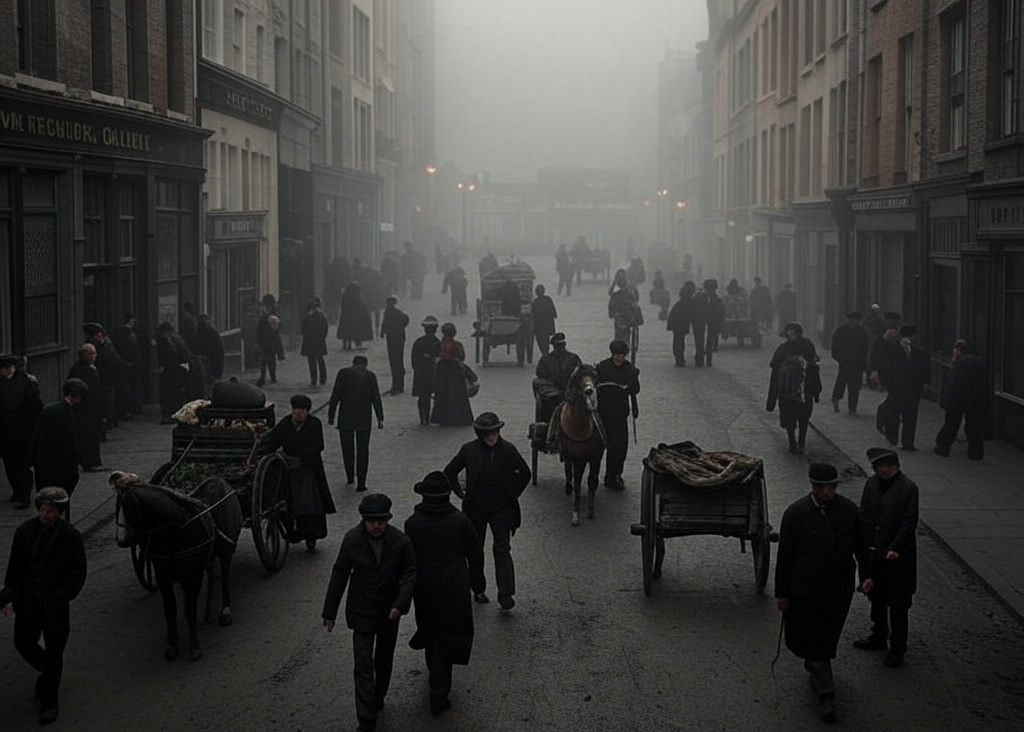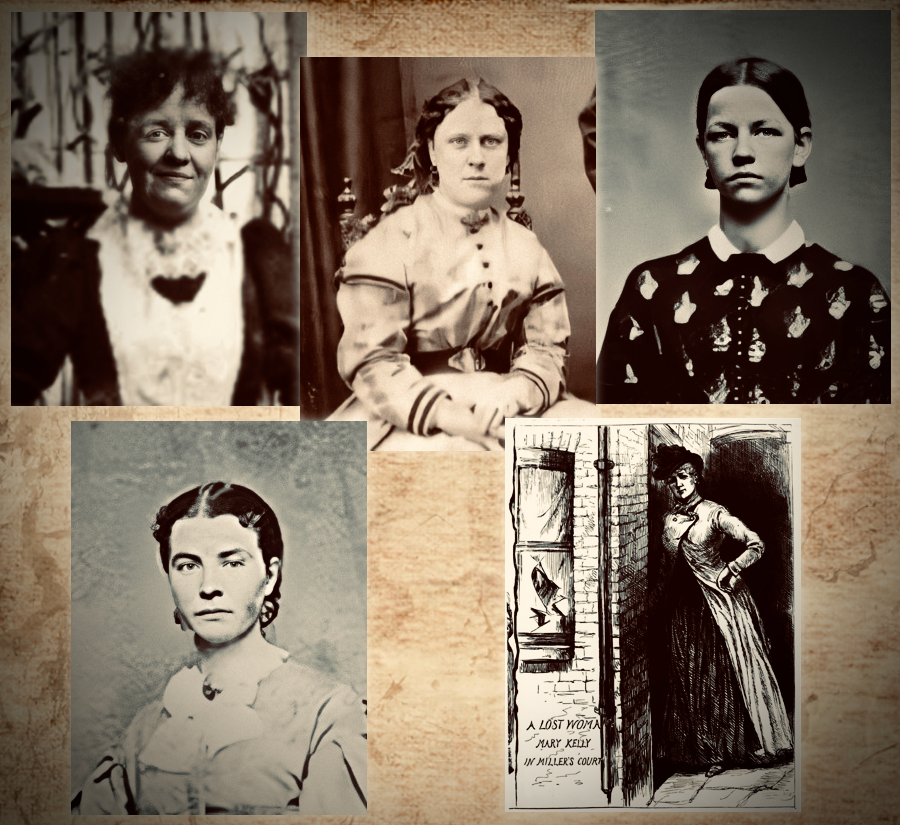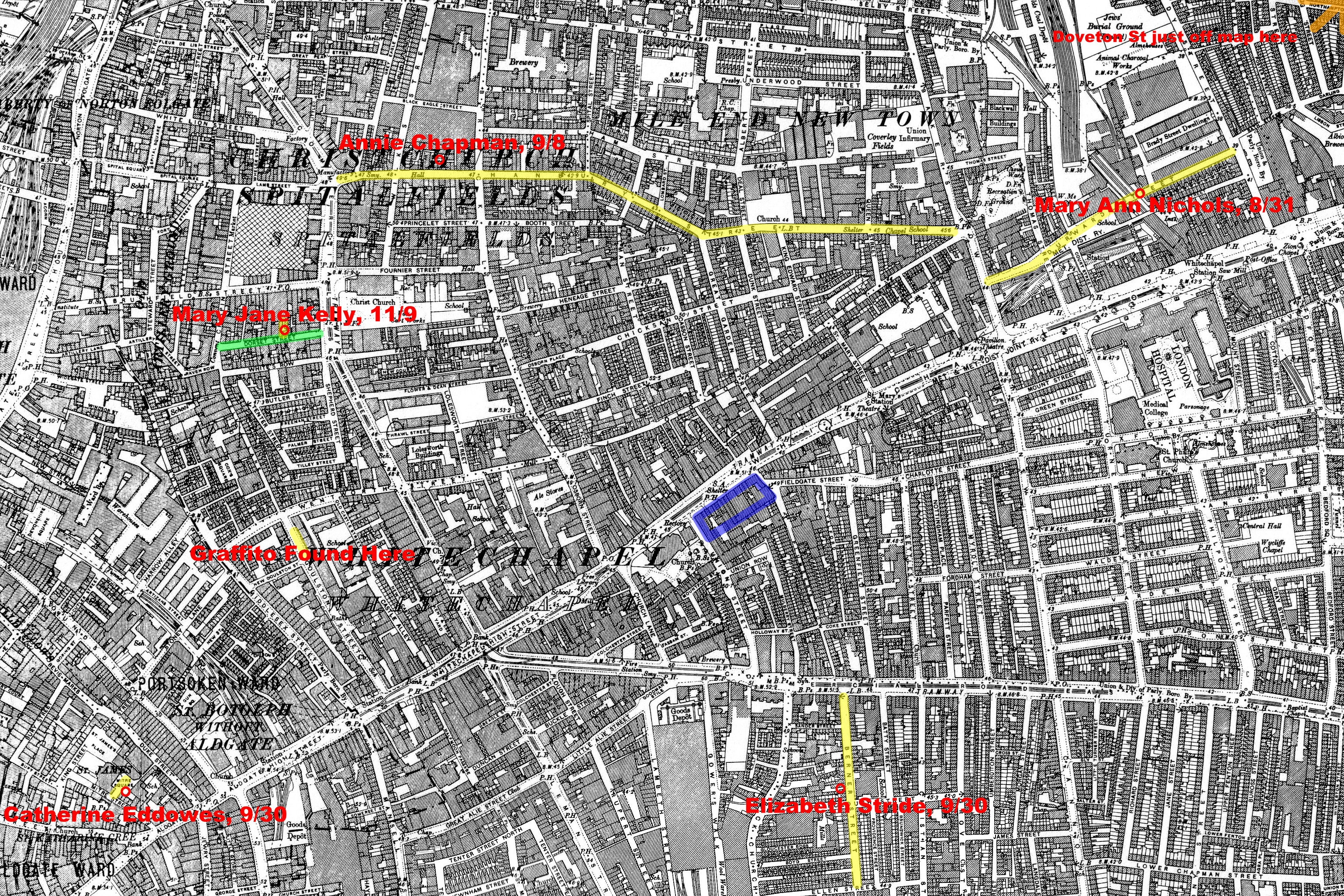Unmasking Jack the Ripper: A Fresh Investigation into the Whitechapel Murders, Part 1
Posted on 05/12/2025 at The Curmudgeon’s Chronicle

Setting the Stage
In the late summer of 1888, the East End of London was a labyrinth of shadows. Gaslights flickered on narrow, cobblestone streets, casting long, trembling pools of light over the grime of Whitechapel – a district teeming with poverty, desperation, and the forgotten. Here, in the heart of this Dickensian nightmare, women known as “unfortunates” walked the streets, selling their bodies for a few pence to afford a bed in a doss-house or a dram of gin to dull the cold. It was a world where survival was a daily gamble – until a predator turned it into a slaughterhouse.
Between August and November 1888, five women were brutally murdered in Whitechapel, their bodies mutilated with a savagery that shocked even the hardened residents of the East End. The killer, dubbed “Jack the Ripper,” became a phantom of terror, his identity a mystery that has haunted the world for over a century. The police hunted him with every tool they had – patrols, sweeps, interrogations – but he slipped through their fingers, leaving behind a trail of blood and a question that echoes to this day: Who was Jack the Ripper?
I’ve been captivated by this case for years, poring over inquest reports, police files, and newspaper accounts from 1888, trying to piece together the puzzle. In this multi-part series, I’m taking a fresh look at the Whitechapel murders, using only the historical evidence available at the time – no modern speculation, just the facts as they were recorded. My goal is to identify the most likely suspect by assigning probabilities to each candidate based on their proximity, motives, and behavior. By the end, I’ll reveal who I believe was Jack the Ripper – a name that might surprise you.
In this first part, we’ll set the stage: the five canonical murders, the East End of 1888, and the four men I’ve identified as key suspects. Join me as we step into the fog of Whitechapel and begin the hunt for history’s most infamous killer.
The Canonical Five: A Trail of Blood
The Whitechapel murders spanned three harrowing months in 1888, claiming the lives of five women now widely accepted as the “canonical” victims of Jack the Ripper. Each killing was more gruesome than the last, a chilling escalation that gripped London in fear.
- Mary Ann Nichols (August 31, 1888): Known as “Polly,” Nichols was 43, a mother of five who had fallen into prostitution after her marriage collapsed. At 3:40 a.m., her body was found in Buck’s Row, a dark, narrow street in Whitechapel. Her throat had been slashed twice, deep to the spine, and her abdomen was slashed open, intestines protruding. Dr. Reese Ralph Llewellyn, who examined her, noted the cuts were crude, lacking anatomical skill, but the brutality was undeniable – blood was still oozing when a policeman arrived minutes later. Nichol’s murder was the first, a grim signal of the terror to come.
- Annie Chapman (September 8, 1888): Chapman, 47, known as “Dark Annie,” was found at 6:00 a.m. in the backyard of 29 Hanbury Street, Spitalfields, just a half-mile from Buck’s Row. Her throat was cut, her abdomen ripped open, and her intestines were draped over her shoulder. The killer had taken her uterus and parts of her bladder, showing a new level of precision. Witnesses heard a cry of “No!” around 5:30 a.m., but no one saw the killer – only a “shabby-genteel” man speaking to a woman minutes earlier. Chapman’s murder confirmed a pattern: a serial killer was stalking Whitechapel.
- Elizabeth Stride (September 30, 1888): Stride, 45, a Swedish immigrant known as “Long Liz,” was found at 1:00 a.m. in Dutfield’s Yard off Berner Street, less than half a mile from Hanbury. Her throat was cut, but there were no mutilations – a cart’s arrival likely interrupted the killer. A witness, Israel Schwartz, saw a man arguing with a woman moments before, shouting “Lipski!” – a slur hinting at a Jewish suspect. Stride’s death would be the first of two that night.
- Catherine Eddowes (September 30, 1888): Just 45 minutes later, at 1:35 a.m., Eddowes, 46, was found in Mitre Square, a half-mile from Berner Street. Her throat was slashed, her face mutilated, and her abdomen torn open – intestines out, uterus and kidney taken. A witness, Joseph Lawende, saw a “sailor-like” man with a woman minutes before, but the killer vanished. Eddowes’ murder, paired with Stride’s, became known as the “double event,” a night of unprecedented horror. A bloodied apron found nearby in Goulston Street, with the graffito “The Juwes are the men that will not be blamed for nothing,” fueled rumors of a Jewish killer.
- Mary Jane Kelly (November 9, 1888): Kelly, 25, the youngest victim, was found at 10:45 a.m. in her room at 13 Miller’s Court, Dorset Street, a mile from Mitre Square. Her murder was the most savage – her face was “hacked beyond recognition,” her throat cut to the spine, her abdomen emptied, her heart taken. Dr. George Bagster Phillips called it “savage… overkill.” Witnesses saw her with men that night – a “blotchy-faced” man stated one, and a well-dressed “Astrakhan” man said another – but the killer left no trace. Kelly’s death marked the end of the canonical spree, but the mystery only deepened.
These five murders, spanning just over two months, turned Whitechapel into a cauldron of fear. The police were baffled, the public panicked, and the Ripper became a legend – a faceless monster who struck and vanished. But who was he?

The Suspects: Four Men in the Shadows
To find Jack the Ripper, I’ve narrowed the field to four men, each with ties to the crimes through proximity, behavior, or historical suspicion. I’ll evaluate them using 1888 evidence – police reports (MEPO 3/140), inquest testimony, and contemporary account – assigning probabilities based on their likelihood for each murder and the series as a whole. Here are the players:
- Charles Cross (aka Charles Lechmere): A 39-year-old carman for Pickfords, Cross lived at 22 Doveton Street, Bethnal Green, in 1888, just 0.5 miles from Buck’s Row. He’s the only suspect we can place at a crime scene – Nichols’ murder. Cross testified at the inquest that he found her body at 3:40 a.m., but his story has holes: he used “Cross” (his stepfather’s name) instead of “Lechmere,” and he told PC Jonas Mizen a policeman wanted him at the scene, though none was there. Cross lived a quiet life until 1920, but his proximity to the murder sites – his mother lived in Sion Square, 0.3 miles from Buck’s Row and within a mile to all other murder sites – makes him a person of interest. Could he have been hiding in plain sight?
- Joseph Barnett: A 30-year-old fish porter, Barnett was Mary Jane Kelly’s lover, living with her at 13 Miller’s Court until they split on October 30, 1888, over her prostitution. He was questioned by police after Kelly’s murder – Inspector Abberline noted his alibi (playing whist at Buller’s lodging) but cleared him (MEPO 3/140, November 10, 1888). Barnett’s jealousy, his knife skills as a fishmonger, and his access to Kelly’s room make him a natural suspect for her killing, but what about the others? His Dorset Street address (0.3 miles from Kelly) keeps him in the frame.
- Aaron Kosminski: A 23-year-old Polish Jewish barber, Kosminski lived in Sion Square, Whitechapel – 0.3 to 1 mile from the murder sites. He’s a historical favorite, named by Chief Inspector Donald Swanson in 1910 as the suspect identified at a “seaside home” (likely by Eddowes’ witness, Lawende). Kosminski was admitted to Colney Hatch Asylum in 1891 with “chronic mania,” having once threatened his sister with a knife. But the evidence is shaky – there’s no 1888 record of him, and asylum notes say he was “not a danger to others.” Could his proximity and alleged madness make him the Ripper, or is he a red herring?
- David Cohen (aka Nathan Kaminsky?): Cohen, 23, a violent Jewish vagrant, was admitted to Colney Hatch in December 1888, just after Kelly’s murder, and died in 1889 of “exhaustion.” Some historians (e.g., Martin Fido, 1987) suggest he might be “Nathan Kaminsky,” a syphilitic Jew treated in Whitechapel in 1888, and possibly the “Kosminski” named by the police. With no confirmed address (Mile End Workhouse, 1-1.5 miles from the sites) and no direct tie to the crimes, Cohen is a long shot – but his violent behavior in the asylum keeps him on the list.
These four men – Cross, Barnett, Kosminski, and Cohen – form the core of my investigation. Each has a connection to the murders, whether through proximity, historical suspicion, or behavior. But only one can be Jack the Ripper.
My Approach: A Fresh Investigation
Here’s how I’ll tackle this case over the next seven parts:
- 1888 Evidence Only: I’m relying on primary sources – police files (MEPO 3/140), inquest testimony, and newspapers like The East London Observer and The Times. No modern theories, no speculation – just the facts as they were recorded at the time.
- Probability-Based Analysis: For each murder, I’ll assign a percentage likelihood to each suspect based on their proximity, opportunity, and fit with the evidence. For example, Cross’s presence at Nichol’s scene might give him a high likelihood for that murder, but what about the others? I’ll also assign an “all-five” probability – how likely each suspect is to have committed the entire series.
- Step-by-Step Journey: We’ll go through each murder chronologically – Nichols, Chapman, Stride, Eddowes, and Kelly – examining the crime scenes, witnesses, and police response. I’ll evaluate each suspect’s role, narrowing the field as we go, until I reveal my top suspect in the sixth part.
- Fairness and Doubt: I’ll explore counterarguments – why each suspect might not be the Ripper – ensuring a balanced investigation. The goal is to find the truth, not force a conclusion.
This isn’t just a retelling of the Ripper story – it’s a fresh investigation, a chance to see the case through new eyes. I’ve already found clues that point to a suspect history may have overlooked, a man who was there all along, staring at us from the shadows of the evidence. But I won’t reveal him yet – let’s walk this path together

The Hunt Begins
The Whitechapel murders of 1888 are more than a historical mystery – they’re a window into a world of fear, desperation, and unanswered questions. Over the next seven parts, we’ll step into that world, examining each murder, each suspect, and each piece of evidence with a detective’s eye. Charles Cross, Joseph Barnett, Aaron Kosminski, and David Cohen – four men, one killer. By the end, I’ll tell you who I believe was Jack the Ripper, and why.
But for now, let’s start at the beginning. On a dark, foggy morning in August 1888, a carman named Charles Cross walked to work through the streets of Whitechapel – and stumbled upon a body that would change history.
What do you think – who was Jack the Ripper? Share your thoughts in the comments below, and join me next time as we dive into the first murder: the brutal slaying of Mary Ann Nichols – and a suspect who was there when it happened.